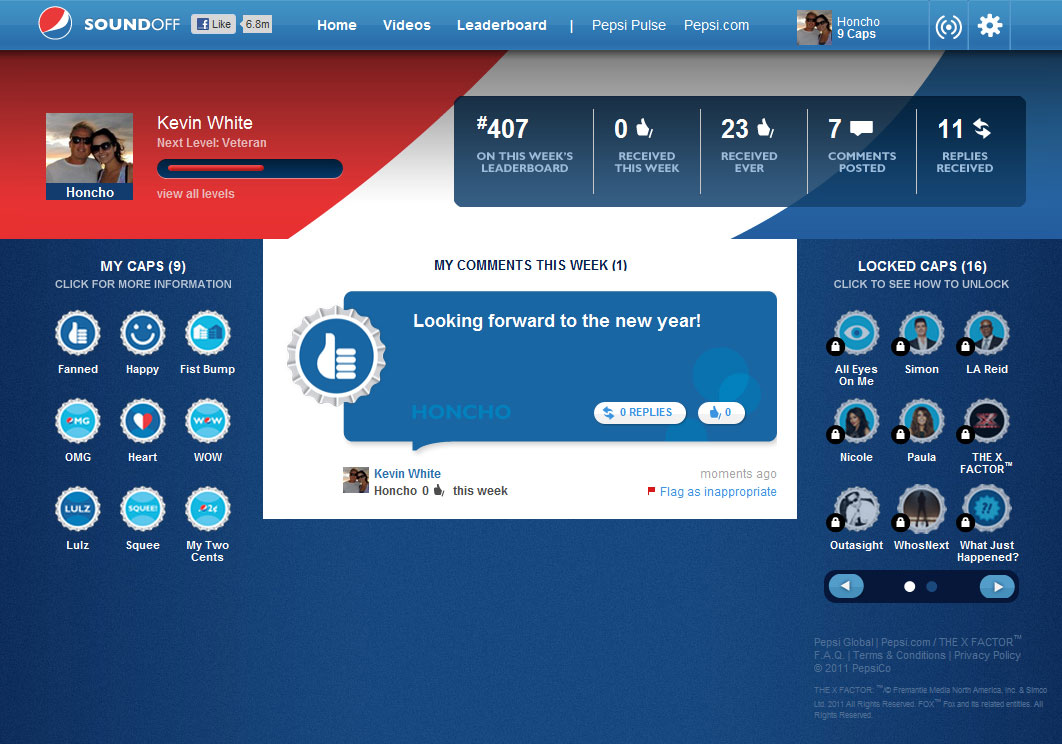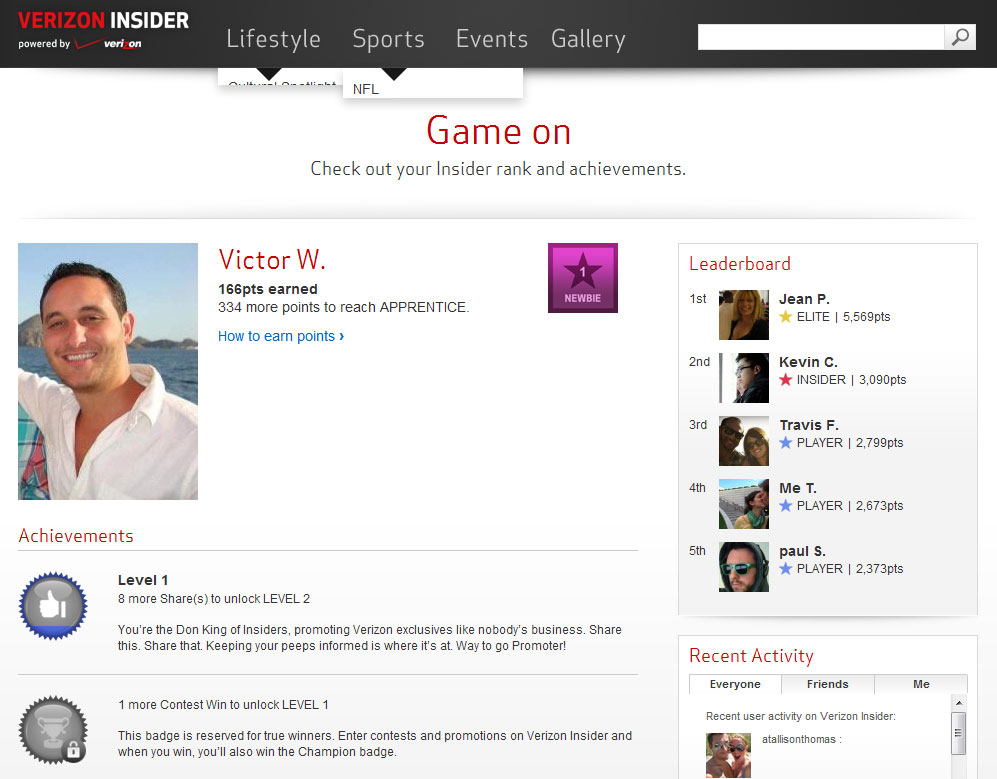Gamification
Social Marketing
Gigya Delivers Social Infrastructure and Gamification

Everyone may be talking about social media right now, but that doesn’t necessarily mean that every company knows how to integrate the benefits of social into their brand and website. To help businesses make the shift to social on the web, Gigya has made it their mission to deliver a social infrastructure to businesses so that they can create a more immersive and social experience for their users, as well as gain better insights into their customer base.
We spoke with Patrick Salyer, CEO of Gigya, about the company’s beginnings, how Gigya envisions the future of social, and what businesses can gain from the social revolution.
Can you tell me about how Gigya was founded and what the problem was that you set out to solve?

WEBSITE: www.gigya.com
FOUNDED: 2009
LOCATION: San Francisco, CA
CUSTOMERS: 500 enterprises; reaches over 1.2 billions users/month
What do you feel was the most difficult part about getting started?
I think maybe the most difficult part is obviously is also one of our biggest advantages, which is social changes so quickly. When we started, Myspace was king, and it was actually the number one social network with over three hundred million users. Now we don’t talk about Myspace whatsoever; so when we started, connecting websites to social networks meant connecting to Myspace, which was a lot different than connecting to Facebook. Myspace was about the profile page and embeddable pieces of content and widgets, whereas Facebook’s about the social graph and the News Feed. So what was difficult was keeping up with that pace of change in terms of our product offering, but that also turned out to be our biggest advantage because that was something that’s very hard for businesses to do. Anytime there’s something very difficult for businesses to do, but is very important, it’s a tremendous opportunity. The Facebook change was the most difficult thing, but also one of our greatest opportunities.
For those who might not have a good idea what it means, what is social infrastructure exactly, and how can companies benefit from implementing it?
Social infrastructure basically provides all the features and functionality that a website or application needs to become social. The reason that this is important is because of that shift in user expectations–users now expect a completely social experience when they go to any online business. To do that, businesses really need to reconfigure the way their sites work. They essentially need to add a social layer that includes a things like social plugins and even gamification tools. What we offer is the integrated end-to-end social infrastructure, offering to help beat those new user expectations and reconfigure the way the sites work.
In terms of the benefits, what we’re seeing is that sites that really integrate social from the ground up are seeing some of the same increases in traffic and time spent on the site that we saw Facebook benefit from. We’ve seen dramatic increases in those kinds of key business metrics as a result of integrating social. It just makes the whole site experience more compelling to today’s users.
What do you think makes Gigya stand out from its competitors?
The one important differentiation for Gigya is that we’re an integrated complete end-to-end suite, a complete offering from beginning to end. That’s absolutely critical to the businesses we work with, because we’re competing with companies that offer, what we consider, point solutions. They do a fraction or a sliver of what we offer. So a business that we work with can either choose to work with four or five different point solutions and try to cobble those solutions together, which is actually pretty difficult to do; or they can just choose Gigya, which is kind of a one-stop shop solution. We consider ourselves kind of taking the Apple approach, where everything just works together. Social login and commenting and gamification and sharing; whereas our competitors are more like the way your Internet works, where one company provides your router, the other company provides your Internet access, and when your Internet shuts down they both blame each other. We just try to take that one-stop shop approach, which seems to be resonating very well in the market.
So would you say, then, that the one-stop approach is really the core of Gigya’s approach for ensuring that you deliver a better product to your customers?
That’s certainly one piece of our offering that kind of integrated end-to-end solution, but I think there’s other aspects as well. When it comes to the competition, we’ve shown dramatically superior uptime, and just based on the difference of infrastructure, dramatically superior client services given where complete enterprise level SLA, 24/7 support, etc. So we’ve definitely focused on the very high end of the market. We’re an enterprise focused company. We work with 44 percent of comScore 100 properties. We work with eight of the ten media companies, whereas our competition definitely has taken more of a longer tail approach, something better for smaller companies or startups; but we’re really just going after the premium companies on the web.
What kind of company is the ideal customer for Gigya?
We’re not targeting certain verticals because we think what’s happening on the Internet is that there’s just a dramatic shift in social. We think it’s relevant for every single vertical. So if you look at our customer base — and you can go to Gigya.com and look at some of our clients — they’re absolutely across verticals. Eight of the top ten media companies: ABC, CBS, CNN, Turner; news and publishing, we’re talking about CBS News, Fox News, Gannett, Reuters, Time; within brands – Pepsi, Verizon, Toyota, Microsoft, Mogul, E-Com, Dial, Nike, Brookstone, New Balance. So the bottom line here is that I don’t think that there’s a particular vertical that’s benefiting from this because it’s more of a global trend that’s happening in terms of the web socializing.

Where do you see the social landscape headed in the next five years and how do you think changing technology might affect it?
I think we’re going to see a lot of concepts of identity on the web become very, very important. What we mean by identity is being able to take your social identity, which may be on Facebook or Twitter or Linkedin–the contents of your profile, your interest graph, your social graph, your personal information–and being able to take that wherever you go across the web. That will occur through technologies like social login, identity storage, registration of the service, etc. It’s really a complete user management platform.
I think 90 percent of sites within the next three years will have implemented social login, and the end result will be a much more customized experience on the web because I think businesses will understand a lot more about who people are and how to customize the site experience. For example, when you log into a news site through Facebook, they should be able to customize articles based on your interests and your friends’ interests and all the stuff that you and they have looked at. The same can be said for retail and media. So I think that’s going to be a big shift over the next few years.
What do you think are the major challenges in social that you see enterprises dealing with, or even that your see your customers dealing with? How do you feel that they can overcome those challenges?
I think there is still a fair bit of fragmentation in terms of the networks that companies need to connect to. Facebook, of course, is absolutely critical, but you need to think about Twitter when you think about your social strategy, and you need to think about LinkedIn, and then you have Pinterest growing in importance. Each one of these networks have their own things that you need to consider when you implement functionality from them, which I think is going to be a critical piece.
Another piece is the importance of permission-based social data and what you can do with that data. When you allow users to login through a social identity like Facebook or LinkedIn, you get access to an immense amount of data. It’s like you’ve known that user your whole life, and it’s permission based–the user is giving you access to that. So it’s really a challenge to make sense of the data and be able to impact the site experience, as well as things like traditional marketing. That’s one thing we’re hoping to do as a business–we’ve built this infrastructure to help businesses take advantage of this information and make sense of it, and then ultimately send better emails and recommend better content on the site. I think that will be another thing that enterprises will have to continue to deal with.
What makes you the most excited what Gigya is doing?
We are part of something that’s a shift in the way that the Internet works, and really becoming the backbone or the infrastructure for all of social on the web. We touch 1.2 billion users a month, and that’s an incredible amount of users that we control the social experience for. It’s literally bigger than Facebook and Twitter combined, if you think about our reach on the social web, so I think that we’re doing something that’s absolutely dramatic. In some cases, controlling the social experience for more than these huge brands. So I think that’s what I’m excited about–it’s the ability to make a pretty huge impact.
Finally, who do you think are the most interesting people or companies in the social space right now and why?
I think you’d be naive to not call out, obviously, Mark Zuckerberg. Facebook did just IPO, it still has an incredible user base, and they have incredible mindshare and amount of assets. I think that they’re going to do some pretty interesting things over the next 12 months, partly to justify the evaluation that they want to achieve. It could be things like launching a display ad network across the web, or some interesting applications, mobile, a search engine, etc. Obviously, we need to keep paying attention to them.
Twitter just keeps growing and growing in terms of mindshare. I think that we’ll continue to see some interesting things from them, but what I’m most interested in is what’s going to come next? There will be some new social network, I think, over the next 12 to 24 months that will come out of nowhere, and businesses will have to react to that. That’s part of our business to help companies migrate those changes, but I also think that one of the more interesting things will be what comes up in the next 12 to 24 months that we can’t even imagine right now.







